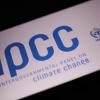

IAMC 1.5°C Scenario Explorer

Keywan Riahi
Program Director and Principal Research Scholar (ECE); Principal Research Scholar (IACC, PM, S3, TISS); Principal Research Scholar (ICI)

Volker Krey
Research Group Leader and Principal Research Scholar (IACC, S3)

Daniel Huppmann
Senior Research Scholar (IACC)